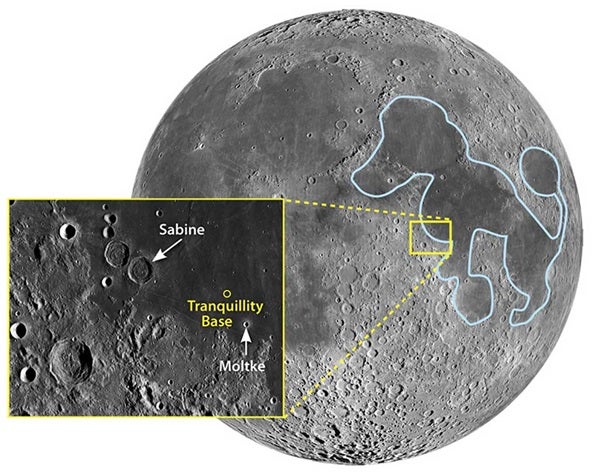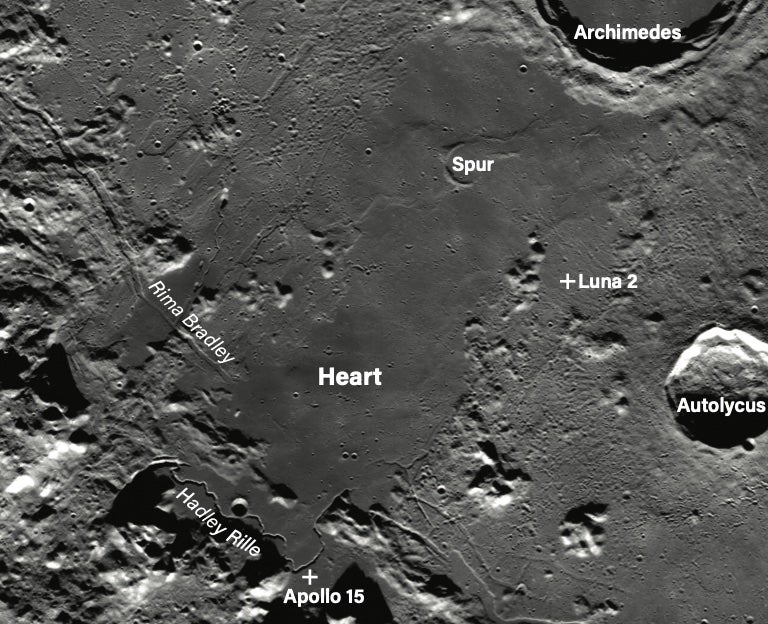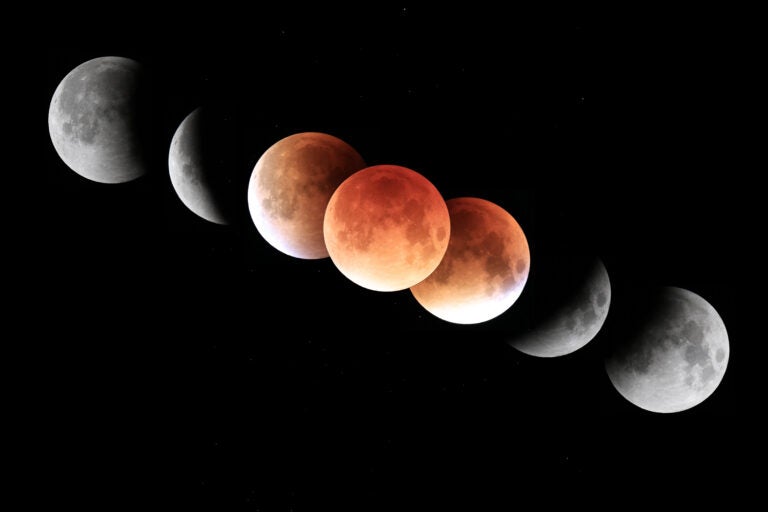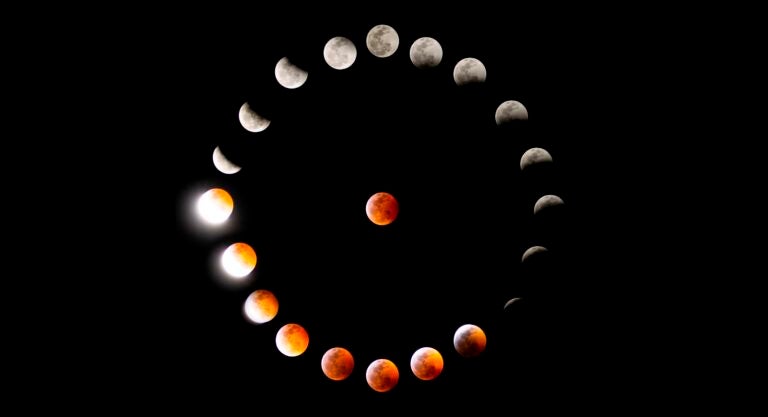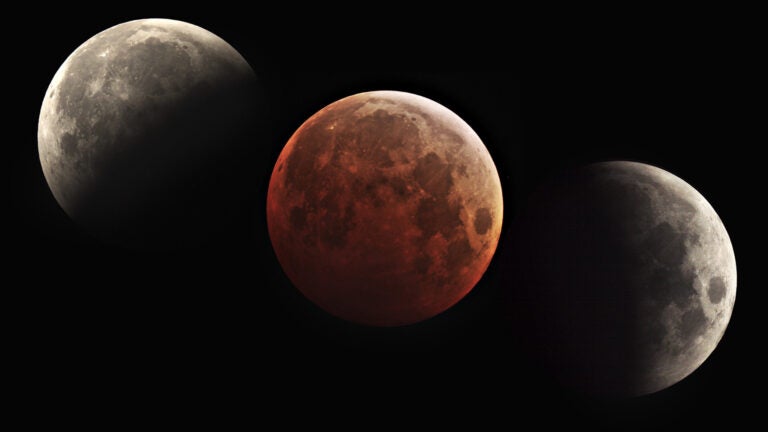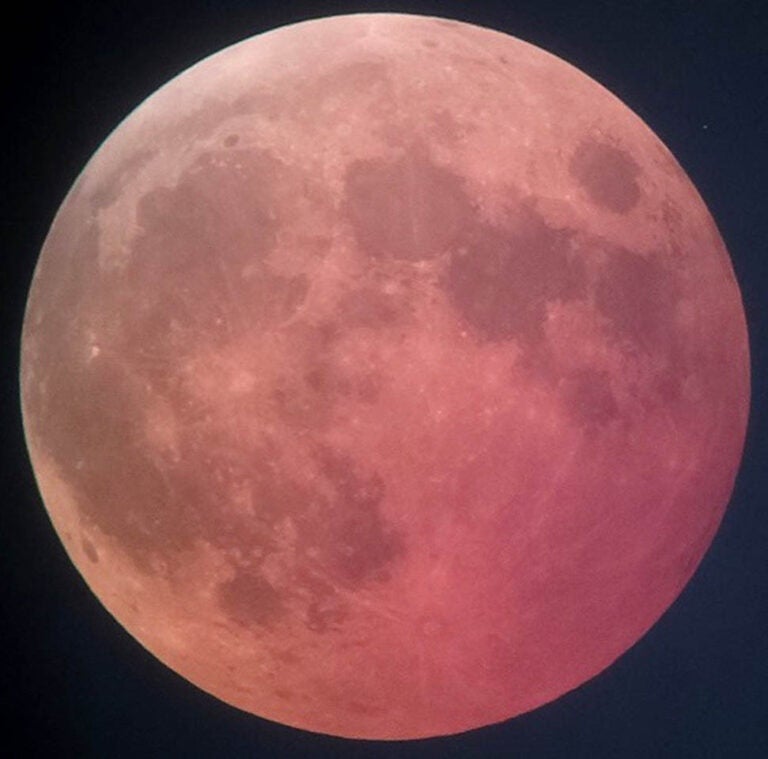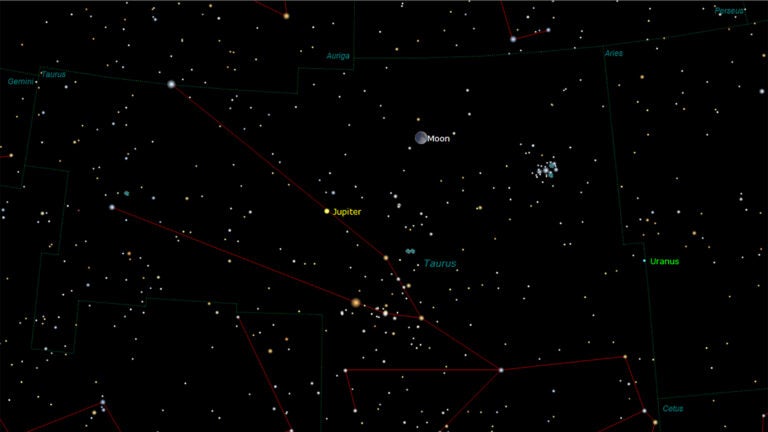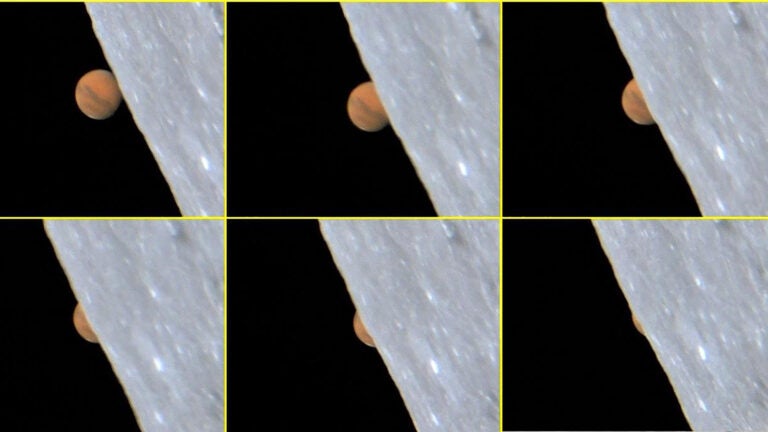Moon Day may not be present in our calendars, but we can commemorate the date by taking a “giant leap” of our own to Tranquillity Base, site of the Apollo 11 lunar landing. Like the original leap, ours will involve two key phases — initial planning and the actual mission.
Planning begins when we determine the location of Tranquillity Base. A “poodle” outlined by the dark lunar maria (seas) on the eastern side of the Moon facilitates the search. The Sea of Vapors and Sea of Serenity form the poodle’s muzzle and head, while the Sea of Tranquillity marks its upper body. The front legs are the Sea of Nectar. The Sea of Fertility serves as hindquarters and rear legs. And no well-groomed poodle is complete without a “pompom” tail — in this case, the Sea of Crises.
The Apollo 11 lunar module Eagle touched down near the southwest shore of the Sea of Tranquillity not far from the point where it merges with the Sea of Nectar. It’s the spot where the lunar poodle’s upper body connects with its front legs. Our inset map pinpoints the location, some 60 miles (100 kilometers) west of the crater Sabine and 20 miles (30km) northwest of the small but bright crater Moltke.
Destination and launch window determined, we enter the mission phase. The Apollo astronauts lifted off on a Saturn V rocket; we’ll travel to the Moon via telescope.
A low-power view (25–50x) that encompasses our entire satellite will allow us to target the general location of Tranquillity Base. Once we’ve accomplished that, we’ll zero in more closely by ramping up the magnification (100x for small scopes, 200x or more for large-aperture instruments).
Unfortunately, we won’t be able to make the final descent to the lunar surface. Even a magnification of 300x (the usual upper limit for an earthbound telescope under average seeing conditions, or atmospheric steadiness) shows us the Moon as it would appear from a distance of 800 miles (1,300km). We won’t see any artifacts from the Apollo 11 mission. No lunar module. No flag. No footprints. In fact, we’d have trouble spotting something the size of a baseball stadium, and most of the area that Armstrong and Aldrin explored would fit inside a baseball diamond.
Does this mean that our Apollo 11 voyage will be a dud? Not at all! Don’t forget that a third Apollo 11 astronaut, Command Module Pilot Michael Collins, remained in orbit around the Moon. We can get a “Collins-eye” view of our satellite by using the highest practical magnification, positioning the Moon at the edge of the field of view, and allowing it to drift across. As the rugged lunar terrain parades before our eyes, we get the illusion of peering out a porthole of the orbiter.
This is the first Moon Day without Neil Armstrong, who passed away August 25, 2012. There may not be any parades or celebrations July 20, 2013, but we can turn our telescopes moonward in tribute to the three daring adventurers who made one giant leap. Have a Happy Moon Day!
Questions, comments, or suggestions? Email me at gchaple@hotmail.com. Next month: Elvis is alive and well — on the Moon! Clear skies!


